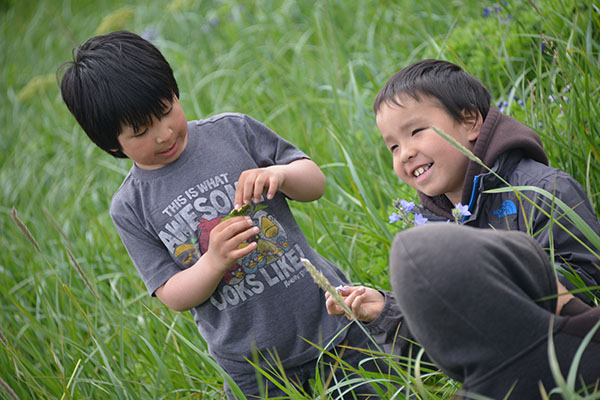 Camp at St. Paul started with a warm-up game of Kittiwake-Sandlance that showed how hard it is for seabirds to find enough food to feed their chicks.
Camp at St. Paul started with a warm-up game of Kittiwake-Sandlance that showed how hard it is for seabirds to find enough food to feed their chicks. The group then watched a special presentation by paleontologists. They told us that St. Paul island is the second to last place on earth the Wooly Mammoths existed and described their research. The science team is trying to figure out when and why St. Paul’s Mammoths went extinct. We then split into groups to do our seabird field trips, and finished by writing in our journals. In the morning and evening some of the students worked on a Rat Prevention mural with Ram Papish. A lot of progress was made. Students wanted the mural to say “NO RATS ALLOWED”.
The group then watched a special presentation by paleontologists. They told us that St. Paul island is the second to last place on earth the Wooly Mammoths existed and described their research. The science team is trying to figure out when and why St. Paul’s Mammoths went extinct. We then split into groups to do our seabird field trips, and finished by writing in our journals. In the morning and evening some of the students worked on a Rat Prevention mural with Ram Papish. A lot of progress was made. Students wanted the mural to say “NO RATS ALLOWED”.
At St. George, we started the day off with the older kids coming over to the house to learn about cameras and videoing with the Alaska Teen Media group. Then after lunch all the kids met at the Rec Hall to learn about seabird adaptations and games. We then headed to the other side of the island where we put in 7 more nest boxes. The younger kids made paper mache Murre eggs and the older ones went down the beach to catch Least Auklets. Once they got caught in the noose carpets Ann took their blood and the kids helped measure and weigh them. The team really enjoyed helping collect puke samples and releasing the Auklets afterwards. Overall we collected two diet and four blood samples from five birds. After dinner the older kids came down to the school to work on their movie with the Alaska Teen Media crew.



